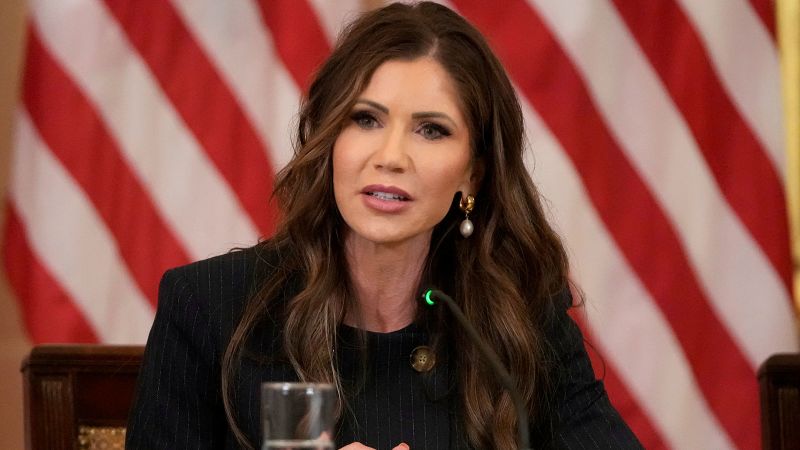The Department of Homeland Security (DHS) has recently implemented a significant initiative targeting over 500 “sanctuary jurisdictions” across the United States, moving to notify these communities that their actions are perceived as hindrances to immigration enforcement. This decision, emerging from the Trump administration’s broader strategy to escalate deportations, emphasizes the government’s intent to increase pressure on localities believed to be obstructing its immigration priorities. The list of these jurisdictions was made publicly available on the DHS website, accompanied by formal notifications indicating whether these entities are noncompliant with federal immigration laws.
Secretary of Homeland Security Kristi Noem articulated the administration’s stance in a news release, stating that “these sanctuary city politicians are endangering Americans and our law enforcement in order to protect violent criminal illegal aliens.” This highlight encapsulates the administration’s narrative surrounding sanctuary jurisdictions, suggesting a moral imperative to enforce immigration statutes more rigorously. The actions are part of a larger strategy to fulfill President Donald Trump’s campaign promise of removing millions of undocumented immigrants from the country.
The compilation of this list involved multiple assessments, including whether specific cities or localities have identified themselves as sanctuaries. The evaluation criteria extended to how much cooperation these jurisdictions demonstrated toward federal immigration authorities, the extent of any restrictions on sharing information with these agencies, and any legal protections offered to individuals residing in the country without authorization. This systematic approach aims to clearly identify and categorize those jurisdictions that have prioritized local governance over federal immigration enforcement.
On April 28, 2017, President Trump signed an executive order mandating that the Secretary of Homeland Security and the Attorney General produce a list of states and localities considered to be obstructing federal immigration laws. This list is intended to be regularly updated, ensuring that jurisdictions remain accountable for their compliance—or lack thereof—with federal law. Sanctioned by the executive order, federal departments, in collaboration with the Office of Management and Budget, are tasked with evaluating federal grants and contracts associated with these sanctuary jurisdictions, with the potential to suspend or terminate financial aid as a punitive measure.
As a further step, if these identified sanctuary jurisdictions remain uncooperative, the Attorney General and the Secretary of Homeland Security have the authority to implement necessary legal remedies. This power underscores a pivotal aspect of the Trump administration’s approach: moving beyond mere identification of noncompliance to actionable consequences that may compel localities to align with federal immigration mandates.
Importantly, the term “sanctuary jurisdiction” does not have a specific legal definition; it generally refers to law enforcement entities or localities that limit cooperation with federal immigration enforcement initiatives. This ambiguity in definition contributes to the ongoing debate about the role and responsibilities of local law enforcement agencies in immigration matters. While U.S. Immigration and Customs Enforcement (ICE) is responsible for enforcing immigration laws nationwide, the agency often relies on local collaboration for information about undocumented individuals who may be targets for deportation.
One strategy employed by the Trump administration to foster such cooperation involves 287(g) agreements, which allow local law enforcement agencies to take on some immigration enforcement responsibilities. These agreements have surged under the current administration, effectively expanding ICE’s operational capacity by leveraging state and local law enforcement resources.
Communities resisting cooperation with ICE often cite safety concerns for immigrant populations, emphasizing that non-collaboration enables witnesses to come forward without fear of deportation. These localities argue that their limited financial resources are better spent on crime fighting rather than immigration enforcement, which they view as a federal responsibility.
The Trump administration’s aggressive measures against perceived sanctuary jurisdictions have not been without legal challenges. Various court rulings have questioned the legality of withholding federal funds as a means of coercion, suggesting a contentious relationship between federal and local governments regarding immigration policy enforcement. The executive orders issued by President Trump — aimed at enforcing compliance and denying funding to jurisdictions that protect undocumented individuals — represent just a segment of the broader fight over the federal approach to immigration enforcement and the roles that states and localities play within that framework.



